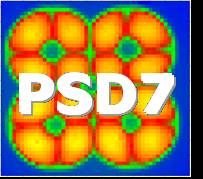Speaker
Dr
Keith Mathieson
(University of Glasgow)
Description
Degenerative photoreceptor diseases, such as age-related macular
degeneration and re-
tinitis pigmentosa, are the most common causes of blindness in the
western world. A
potential cure is to use a microelectronic retinal prosthesis to
provide electrical stimu-
lation to the remaining healthy retinal cells. Due to the success of
cochlear implants in
restoring hearing to the profoundly deaf this is becoming a wide-
spread research area.
Here we describe a system capable of detecting the visual scene and
translating the
image into a train of electrical pulses that stimulates live retinal
tissue. This system
requires a position-sensitive detector to act as a smart retinal
chip. We have developed
a CMOS active pixel sensor with a 10 by 10 array of 100µm pixels.
Each pixel contains
a photodiode and on-pixel circuitry that translates the intensity of
the incoming light
into a certain frequency of output voltage pulses.
The outputs of the pixels are connected to a biocompatible
microelectrode array, which
makes contact with the retinal cells. This electrode array has 74-
electrodes spaced at
60µm and is fabricated on a flexible polyimide substrate that is
only 20µm thick. Each
electrode is a platinum disc of diameter 5µm, which forms the
interface to the retinal
cells.
We have verified the electrical contact between the electrodes and
the retina by record-
ing the response of the output (ganglion) cells to light. A typical
signal to noise ratio
of 30:1 has been achieved with an overall system noise of 5µV rms.
Retinal cells of
only 10µm in diameter have been stimulated by a range of voltages
from 0.1 to 2V
with pulse durations of 0.1-1µs. The effects of charge spreading
within the retina have
been studied and optimal stimulation parameters determined. This
system permits the
simultaneous stimulation and recording of neural activity on the
retina and allows the
image processing that occurs within the retina to be studied.
Primary author
Dr
Keith Mathieson
(University of Glasgow)
